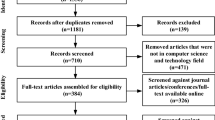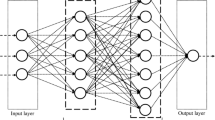Abstract
It is widely accepted that appropriate network topology should be empirically predefined before training a specific neural network learning task. However, in most cases, these carefully designed networks are easily falling into two kinds of dilemmas: (1) When the data is not enough to train the network well, it will get an underfitting result. (2) When networks have learned too much patterns, they are likely to lead to an overfitting result and have a poor performance on processing new data or transferring to other tasks. Inspired by the synaptic pruning characteristics of the human brain, we propose a brain-inspired developmental neural network (BDNN) algorithm by adaptive synaptic pruning (BDNN-sp) which could get rid of the overfitting and underfitting. The BDNN-sp algorithm adaptively modulates network topology by pruning useless neurons dynamically. In addition, the evolutional optimization method makes the network stop on an appropriate network topology with the best consideration of accuracy and adaptability. Experimental results indicate that the proposed algorithm could automatically find the optimal network topology and the network complexity could adaptively increase along with the increase of task complexity. Compared to the traditional topology-predefined networks, trained BDNN-sp has the similar accuracy but better transfer learning abilities.
Feifei Zhao and Tielin Zhang contributed equally to this work and should be considered as co-first authors, and the corresponding author is Yi Zeng.
Access this chapter
Tax calculation will be finalised at checkout
Purchases are for personal use only
Similar content being viewed by others
References
Hinton, G.E., Osindero, S., Teh, Y.-W.: A fast learning algorithm for deep belief nets. Neural Comput. 18(7), 1527–1554 (2006)
Lecun, Y., Bengio, Y., Hinton, G.: Deep learning. Nature 521(7553), 436–444 (2015)
He, K., Zhang, X., Ren, S., Sun, J.: Delving deep into rectifiers: surpassing human-level performance on imagenet classification. In: Proceedings of the IEEE International Conference on Computer Vision, pp. 1026–1034 (2015)
Lawrence, S., Giles, C.L., Tsoi, A.C., Back, A.D.: Face recognition: a convolutional neural network approach. IEEE Trans. Neural Netw. 8(1), 98–113 (1997)
Deng, L., Hinton, G., Kingsbury, B.: New types of deep neural network learning for speech recognition and related applications: an overview. In: Proceedings of the IEEE International Conference on Acoustics, Speech and Signal Processing, pp. 8599–8603 (2013)
Zhou, Z.-H., Feng, J.: Deep forest: towards an alternative to deep neural networks (2017)
Molchanov, P., Tyree, S., Karras, T., Aila, T., Kautz, J.: Pruning convolutional neural networks for resource efficient transfer learning. In: Proceedings of the International Conference on Learning Representations (ICLR) (2017)
Angeline, P.J., Saunders, G.M., Pollack, J.B.: An evolutionary algorithm that constructs recurrent neural networks. IEEE Trans. Neural Netw. 5(1), 54–65 (1994)
Yao, X., Liu, Y.: Evolving artificial neural networks through evolutionary programming. In: Proceedings of the 5th Annual Conference on Evolutionary Programming, pp. 257–266 (1996)
Park, J.C., Abusalah, S.T.: Maximum entropy: a special case of minimum cross-entropy applied to nonlinear estimation by an artificial neural network. Complex Syst. 11, 289–308 (1997)
Vonk, E., Jain, L.C., Johnson, R.: Using genetic algorithms with grammar encoding to generate neural networks. In: Proceedings of IEEE International Conference on Neural Networks 4, 1928–1931 (1995)
Ioan, I., Rotar, C., Incze, A.: The optimization of feed forward neural networks structure using genetic algorithms. In: Proceedings of the International Conference on Theory and Applications of Mathematics and Informatics (ICTAMI) 8, 223–234 (2004)
Chechik, G., Meilijson, I., Ruppin, E.: Synaptic pruning in development: a computational account. Neural Comput. 10(7), 1759–1777 (1998)
Johnston, M.V., Ishida, A., Ishida, W.N., Matsushita, H.B., Nishimura, A., Tsuji, M.: Plasticity and injury in the develo** brain. Brain Dev. 31(1), 1–10 (2009)
Pascual-Leone, A., Amedi, A., Fregni, F., Merabet, L.B.: The plastic human brain cortex. Annu. Rev. Neurosci. 28(28), 377–401 (2005)
Hayashi-Takagi, A., Yagishita, S., Nakamura, M., Shirai, F., Wu, Y., Loshbaugh, A.L., Kuhlman, B., Hahn, K.M., Kasai, H.: Labelling and optical erasure of synaptic memory traces in the motor cortex. Nature 525(7569), 333–338 (2015)
Chechik, G., Meilijson, I., Ruppin, E.: Neuronal regulation: a biologically plausible mechanism for efficient synaptic pruning in development. Neurocomputing 26–27(98), 633–639 (1999)
Chechik, G., Meilijson, I., Ruppin, E.: Synaptic pruning in development: a novel account in neural terms. In: Bower, J.M. (ed.) Computational Neuroscience, pp. 149–154. Springer, Boston (1998). doi:10.1007/978-1-4615-4831-7_25
Shannon, C.E.: A mathematical theory of communication. Bell Syst. Tech. J. 27(3), 379–423 (1948)
Shannon, C.E.: Prediction and entropy of printed English. Bell Syst. Tech. J. 30, 50–64 (1951)
Acknowledgment
This study was funded by the Strategic Priority Research Program of the Chinese Academy of Sciences (XDB02060007), and Bei**g Municipal Commission of Science and Technology (Z161100000216124).
Author information
Authors and Affiliations
Corresponding author
Editor information
Editors and Affiliations
Rights and permissions
Copyright information
© 2017 Springer International Publishing AG
About this paper
Cite this paper
Zhao, F., Zhang, T., Zeng, Y., Xu, B. (2017). Towards a Brain-Inspired Developmental Neural Network by Adaptive Synaptic Pruning. In: Liu, D., **e, S., Li, Y., Zhao, D., El-Alfy, ES. (eds) Neural Information Processing. ICONIP 2017. Lecture Notes in Computer Science(), vol 10637. Springer, Cham. https://doi.org/10.1007/978-3-319-70093-9_19
Download citation
DOI: https://doi.org/10.1007/978-3-319-70093-9_19
Published:
Publisher Name: Springer, Cham
Print ISBN: 978-3-319-70092-2
Online ISBN: 978-3-319-70093-9
eBook Packages: Computer ScienceComputer Science (R0)




